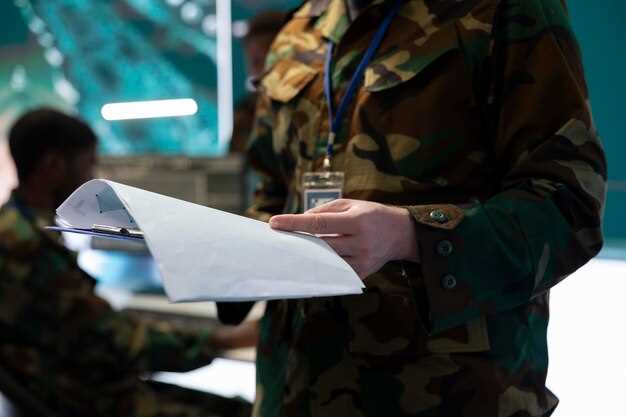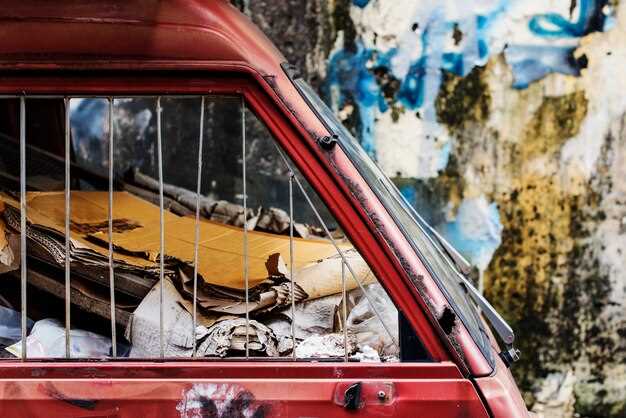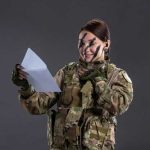Investing in armored vehicles can drastically reduce casualties in conflict zones. Analyzed data from recent military operations indicates a remarkable decrease in injuries among personnel utilizing these robust machines. Consider the case in Afghanistan, where the use of Mine-Resistant Ambush Protected (MRAP) vehicles resulted in a 70% reduction in fatalities from improvised explosive devices (IEDs). This statistic highlights the intrinsic value of armored vehicles on the battlefield.
Moreover, armored vehicles like the “Buffalo” vehicle have proven instrumental in humanitarian missions. During the 2010 earthquake in Haiti, rescue teams employed armored transports to navigate through hazardous debris and unstable areas, effectively safeguarding the lives of both victims and rescuers. This scenario illustrates how armored vehicles not only provide protection but also enhance mission success under dire circumstances.
Analyzing the deployment of armored vehicles offers insights into best practices for future operations. Military strategists must assess terrain and threats to effectively integrate these vehicles into their plans. Identifying key elements, such as mobility, armor thickness, and technological enhancements, can lead to smarter investment strategies tailored for specific operational needs. Each case study reaffirms the significance of armored vehicles in saving lives during high-risk situations.
The Role of Armored Vehicles in Civilian Protection Operations

Armored vehicles play a pivotal role in ensuring the safety of civilians during protection operations. These vehicles provide critical defense against potential threats, including small arms fire and explosive devices, making them indispensable in high-risk environments.
In conflict zones, the swift deployment of armored vehicles allows for rapid response to emergencies. Military and humanitarian organizations often use these vehicles to escort aid convoys, ensuring that essential supplies reach those in need without delay. For example, the United Nations utilizes armored personnel carriers to facilitate the safe transit of relief workers and resources in unstable regions.
Design Features That Enhance Safety
The design of armored vehicles incorporates specialized materials that enhance their protective capabilities. Many models feature composite armor, which balances weight with defensive strength, allowing for mobility without compromising safety. Bull bars and reinforced windows provide additional protection against projectiles and roadside bombs.
Modern armored vehicles often include advanced technology, such as communication systems that enable real-time updates. This connectivity allows operators to stay informed about threats and adjust their routes and strategies accordingly, minimizing the risk to personnel and civilians.
Training for Maximizing Impact
Proper training for personnel operating armored vehicles is critical. Drivers and security teams undergo rigorous programs to master both vehicle handling and tactical maneuvers. Simulation exercises prepare them for various scenarios, ensuring they can respond effectively to unexpected challenges. Coordination with local law enforcement also enhances safety for civilians, fostering trust and collaboration within the community.
Structured protocols during civilian protection operations define roles and responses, creating a clear framework for action. Implementing these strategies not only protects lives but also builds a foundation for stability in affected areas. By integrating armored vehicles into broader protection plans, organizations are better equipped to safeguard civilians during operations in turbulent environments.
Real-Life Scenarios: Armored Vehicles in Conflict Zones

Armored vehicles play a pivotal role in saving lives during armed conflicts. During the Iraq War, the use of Mine-Resistant Ambush Protected (MRAP) vehicles lowered fatalities among troops significantly. These vehicles shield soldiers from IEDs and small arms fire, creating a safer environment for operations.
In Syria, humanitarian convoys utilize armored vehicles to deliver aid in areas prone to violence. The International Committee of the Red Cross (ICRC) reported a 30% increase in mission success rates when using armored transports, ensuring that essential supplies reach civilians in need.
During the conflict in Afghanistan, the British Army deployed the Mastiff vehicles, which provided high levels of protection against explosive devices. The Ministry of Defence noted that these vehicles contributed to reduced casualty rates for British soldiers by over 50% in certain operations.
In urban combat scenarios, the use of armored personnel carriers (APCs) assists in troop movements while minimizing exposure to enemy fire. A study by the U.S. Army highlighted that units employing APCs experienced a significant decrease in wounded personnel, allowing for better tactical advantages on the ground.
| Conflict Zone | Vehicle Type | Impact on Casualties |
|---|---|---|
| Iraq | MRAP | 50% reduction in fatalities |
| Syria | Armored Convoys | 30% increase in aid delivery |
| Afghanistan | Mastiff | 50% reduction in casualties |
| Urban Combat | APC | Significant decrease in wounded personnel |
These scenarios illustrate how armored vehicles enhance operational safety and mission success, demonstrating their critical role in conflict zones worldwide.
Key Features of Armored Vehicles That Enhance Safety

Ballistic Protection: Armored vehicles feature advanced ballistic glass and reinforced armor systems that effectively withstand high-caliber projectiles and explosive fragments. This protection reduces the likelihood of injury to passengers during hostile encounters.
Blast Resistance: Many armored vehicles are designed with blast-resistant technology, enabling them to absorb shock from explosions. This feature minimizes trauma to occupants and maintains the vehicle’s integrity after encountering improvised explosive devices (IEDs).
Run-flat Tires: These specialized tires allow a vehicle to continue moving even when punctured, ensuring that occupants can escape dangerous situations despite tire damage. This capability is crucial in quick evacuation scenarios.
Advanced Communication Systems: Equipped with reliable communication equipment, armored vehicles enable occupants to stay connected with command centers or emergency services. Staying informed enhances strategic decision-making during critical situations.
Surveillance and Detection Systems: Integrated sensors and cameras provide real-time situational awareness. Occupants can monitor their surroundings and detect potential threats before they escalate, enhancing proactive safety measures.
Improved Mobility: Many armored vehicles incorporate powerful engines and all-terrain capabilities, allowing them to navigate difficult environments. This mobility plays a vital role in avoiding ambushes and reaching safe zones swiftly.
Secure Storage Compartments: Armored vehicles often include secure storage for weapons and emergency supplies. This organization ensures that critical resources are readily available without compromising safety or accessibility.
By harnessing these features, armored vehicles significantly enhance the safety of their occupants, providing peace of mind in hostile environments.
Testimonials from Survivors: Personal Stories of Rescue
“During a convoy, our armored vehicle took incoming fire. It felt like the world was ending, but the protective shielding held strong. I walked away with only minor injuries, but it could have been so much worse without that vehicle. I owe my life to its design.” – Mark T.
“As we patrolled a hostile area, an IED detonated near our Humvee. The blast was deafening, yet the armor absorbed the impact. Thanks to that vehicle, all of my team returned safely. We continue to share our story to highlight the importance of armored protection.” – Sarah K.
Real Stories, Real Impact
“I was driving when our armored truck was ambushed in a dangerous region. The gunfire was relentless, but the vehicle’s armor provided a shield. It allowed us to escape safely, no fatalities. The experience changed my life forever, showing me the true value of safety equipment.” – David L.
“In a chaotic moment, we found ourselves trapped. Our armored vehicle shielded us from enemy fire for over an hour. The durability gave us time to call for backup. I think about that day every time I see an armored vehicle; it saved my life and my crew’s lives.” – Jessica M.
Why Armored Vehicles Matter
“In a conflict zone, certainty is scarce. Our vehicle took hits from all sides. Each time we were hit, I realized how fortunate we were to be inside. The reinforced structure blocked direct access to us, allowing us to emerge with minimal injuries. Armored vehicles proved their worth that day.” – Ahmed R.
“Every time I hear a siren, I think of that armored vehicle. It wasn’t just metal; it stood between us and danger. The miracle of survival doesn’t just rest on luck; it’s about having reliable technology that protects lives. I advocate for more investment in these vehicles so others can be safe too.” – Laura N.
Lessons Learned from Successful Armored Vehicle Deployments
Regular training on armored vehicle operation sharpens skills and ensures readiness. Conduct real-world simulations to prepare teams for various scenarios. Adjust training based on the specific challenges encountered in deployments.
Maintain open communication between vehicle operators and support units. This coordination enhances situational awareness and improves response times during critical operations.
Invest in upgrades based on field feedback. Modifications such as additional armor plating or improved communication systems can significantly enhance survivability and mission success rates.
- Implement robust maintenance schedules. Preventative care minimizes breakdowns and extends vehicle lifespan, keeping units operational in high-stress environments.
- Conduct post-deployment assessments. Gather insights on vehicle performance and crew experiences to inform future deployments and enhance tactical approaches.
Leverage data analytics to monitor performance metrics. Analyzing data from previous missions can identify patterns and guide decision-making for future operations.
- Evaluate the geographic terrain and threat landscape before deployment. Understanding these factors helps in optimizing vehicle selection and positioning.
- Prioritize crew safety training. Educate teams on emergency protocols and evacuation procedures to ensure survival during unexpected incidents.
Encourage collaboration with other military branches. Sharing armored vehicle strategies and techniques increases overall operational effectiveness and creates a unified approach to challenges.
Emphasize the importance of adaptability. Equip teams to think creatively and pivot strategies as situations evolve. Flexibility in tactics can turn the tide in demanding environments.
Invest in psychological support for crews. The mental health of personnel plays a critical role in maintaining performance and operational readiness. Provide resources and counseling to address post-deployment challenges.
Analysis of Armored Vehicle Performance Under Fire
Armored vehicles must withstand various attack scenarios without compromising crew safety. When analyzing their performance, focus on armor quality, mobility, and situational awareness.
Armor Quality
The armor composition directly influences the vehicle’s ability to absorb impacts. Steel is common, but advanced materials like ceramic composites and explosive reactive armor provide enhanced protection. Select vehicles equipped with modular armor systems, allowing for upgrades based on threat levels.
- Test against common threats like small arms fire, IEDs, and anti-tank weapons.
- Consider thickness and angle of the armor for optimal ballistic performance.
- Assess weight vs. protection balance to ensure mobility isn’t compromised.
Mobility and Maneuverability
Speed and agility matter during engagements. Vehicles should maintain a low profile and reactive speed to avoid detection. Evaluate performance metrics like acceleration, turning radius, and obstacle negotiation capabilities.
- Incorporate all-terrain capabilities for diverse environments.
- Prioritize rapid deployment features to enhance tactical advantage.
- Test vehicle resilience through simulated ambush scenarios.
Additionally, situational awareness technology enhances crew safety. Integrate sensors, cameras, and communication systems to provide real-time information, reducing surprise attacks. Evaluating armored vehicle performance should encompass both defensive and offensive capabilities, ensuring comprehensive protection for the crew during operations.
Future Innovations in Armored Vehicle Design for Greater Protection
Utilizing advanced materials like graphene and carbon nanotubes enhances the structural integrity of armored vehicles while reducing weight. These innovations lead to improved maneuverability and fuel efficiency without compromising protection levels.
Active Protection Systems
Integrating active protection systems (APS) offers a new layer of defense against incoming threats. These systems detect and intercept projectiles, actively neutralizing them before impact. Incorporating machine learning algorithms allows APS to adapt to various scenarios, increasing reliability and effectiveness under different conditions.
Smart Technology and Connectivity
Incorporating smart technology enhances situational awareness for operators. Vehicles equipped with sensors and real-time data analytics provide critical information about surroundings. This connectivity allows for better decision-making and quick responses to potential threats. Implementing augmented reality can further enhance the operator’s experience by overlaying crucial information directly into their field of view.
The Impact of Armored Vehicles on Emergency Response Strategies
Integrating armored vehicles into emergency response plans significantly enhances safety and operational success. These vehicles provide advanced protection against various threats, enabling responders to operate in high-risk areas with reduced risk of injuries. Their armor can withstand gunfire and shrapnel, offering peace of mind during critical missions.
Companies implementing armored vehicles report faster response times. With secure transport, medical personnel can reach victims without hesitation, increasing the likelihood of positive outcomes. For example, a report from an urban area highlighted that emergency medical services reduced their transport time to trauma victims by 30% after deploying armored units.
Training responders to use armored vehicles effectively enhances coordination during crises. Teams gain confidence in their movements, allowing for more strategic placements and rapid evacuation of casualties when required. Regular drills that include armored vehicle operations improve preparedness and communication, ensuring that every member knows their role during an emergency.
Moreover, community trust in emergency services can increase with visible armored vehicle presence. Residents feel safer when they know first responders are equipped to handle violence or unstable situations. This relationship boosts community cooperation, leading to better resource sharing and intelligence gathering in potential crisis scenarios.
Utilizing armored vehicles for transporting key personnel, such as law enforcement or fire department leaders, enhances command capabilities on the ground. Leadership is better positioned to assess situations and make informed decisions, which directly impacts the effectiveness of response strategies.
The shift towards incorporating armored vehicles also encourages investment in modern communication technologies. Such upgrades ensure that responders remain connected in challenging environments, allowing for real-time updates and coordination with other agencies.
In conclusion, adopting armored vehicles plays a significant role in refining emergency response strategies. By prioritizing safety, efficiency, and community relations, agencies can create a more effective framework for handling emergencies. Agencies aiming to improve their response capabilities should consider integrating these vehicles into their operational protocols.
Video:
A Waitress Paid for a Homeless Veteran’s Meal. The Next Day, a Military Convoy Pulled Up
A Waitress Paid for a Homeless Veteran’s Meal. The Next Day, a Military Convoy Pulled Up by QH Incredible Stories 45,027 views 1 day ago 27 minutes
Q&A:
What are some specific examples of situations where armored vehicles have saved lives?
Armored vehicles have been instrumental in various conflict situations and emergency scenarios. For instance, during military operations, troops traveling in armored Humvees have survived direct attacks thanks to their reinforced structures. In civilian contexts, armored vehicles have been used during riots or protests to protect law enforcement personnel and civilians alike. One notable case occurred during a terrorist incident where an armored personnel carrier was deployed, successfully shielding rescuers and victims from further harm while they evacuated those in danger.
How do armored vehicles provide protection in combat situations?
Armored vehicles are designed with reinforced materials and advanced technology to withstand attacks from firearms, explosives, and other weapons. Their thick walls and bullet-resistant glass are engineered to absorb or deflect projectiles, reducing the likelihood of injury to personnel inside. In addition, many armored vehicles are equipped with defensive systems such as smoke screens and armored plating around vital components, further enhancing their protection capabilities in hostile environments.
What advancements have been made in the design of armored vehicles in recent years?
Recent advancements in armored vehicle design focus on enhanced mobility, better protection, and improved technology integration. Manufacturers have experimented with lighter materials such as composite armor, which provides similar protection levels while reducing weight. Additionally, modern armored vehicles often include advanced electronics for navigation, communication, and situational awareness. Some models are now equipped with active protection systems that detect incoming threats and deploy countermeasures automatically, greatly improving the safety of the crew.
Can armored vehicles be used in humanitarian situations?
Yes, armored vehicles play a significant role in humanitarian situations, particularly in conflict zones or areas prone to violence. Organizations like the United Nations often use armored vehicles to transport aid workers safely in regions where security is a concern. These vehicles help ensure that essential supplies reach those in need without putting the lives of humanitarian personnel at risk. They also facilitate safe evacuations when tensions rise, allowing organizations to respond quickly to emergencies.
What factors influence the effectiveness of armored vehicles in saving lives?
The effectiveness of armored vehicles in saving lives depends on several factors, including the vehicle’s design and technology, the training of the personnel using them, and the context in which they are deployed. A well-designed vehicle with advanced protection can better withstand attacks, but if the crew is not adequately trained to operate it in hazardous conditions, its potential may not be fully realized. Additionally, the specific challenges of the environment — such as terrain, weather, and the presence of organized threats — can also impact the effectiveness of these vehicles in real-life scenarios.

